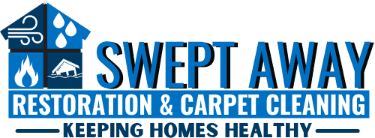
Are you ready to tackle the aftermath of a flood in Ashland, Oregon? Before diving into the cleanup process, it's crucial to prioritize your safety. In our guide, we'll discuss the essential safety issues that should be addressed first during Ashland flood cleanup.
From assessing structural stability to ensuring electrical safety and preventing contamination, we've got you covered.
Let Swept Away Restoration guide you through the process, providing expertise and care for a safe and successful cleanup.
Structural Stability and Hazards Assessment
Before beginning the cleanup process, you should conduct a thorough assessment of the structural stability and potential hazards in your home. This step is crucial for ensuring your safety and preventing further damage.
Start by visually inspecting the foundation, walls, and ceilings for signs of cracks, bulges, or other structural issues. Look for loose or damaged electrical wires, gas leaks, or exposed sharp objects that could pose a danger.
It's also important to check for signs of mold growth, as flooding can create a breeding ground for harmful mold spores. Note any areas that need immediate attention or professional help.
Electrical Safety and Gas Leak Detection
Check for potential electrical safety hazards and gas leaks before starting the cleanup process. Safety should always be the top priority when dealing with flood cleanup.
To ensure electrical safety, start by turning off the main power supply to the affected area. Inspect all electrical appliances, outlets, and wiring for signs of damage or water intrusion. If you notice any frayed wires, exposed electrical components, or standing water near electrical sources, don't attempt to handle it yourself. Contact a licensed electrician immediately to address the issue.
Additionally, it's crucial to check for gas leaks, as floodwaters can damage gas lines and pose a serious risk. Use your sense of smell to detect any gas odors and, if detected, evacuate the area and call the gas company for help.
Taking these precautions will help ensure a safe cleanup process.
Contamination and Mold Prevention Measures
Take immediate steps to address the potential contamination and implement effective mold prevention measures during the Ashland flood cleanup process. Contamination is a significant concern after a flood, as the water can carry harmful bacteria, viruses, and other contaminants that pose health risks.
To ensure the safety of the affected area, it's crucial to thoroughly clean and disinfect all surfaces and materials that have come into contact with floodwater. This includes walls, floors, furniture, and personal belongings.
Additionally, proper ventilation and dehumidification should be implemented to prevent mold growth. Mold can start to develop within 24-48 hours of water damage, so it's important to act quickly.
Professional water damage restoration services can provide the expertise and equipment needed to effectively address contamination and prevent mold from spreading.
Swept Away Restoration for premier water damage repair
In conclusion, regarding Ashland flood cleanup, prioritizing safety is essential. Assessing the structural stability and identifying potential hazards should be the first step.
Ensuring electrical safety and detecting gas leaks is crucial for a safe environment. Taking measures to prevent contamination and mold growth is also important.
Remember, 'better safe than sorry' regarding protecting yourself and your home during the cleanup process.
Revive Your Space Today! Contact Swept Away Restoration for premier water damage repair. We're available 24/7 to rescue your home from flooding. Act now to reclaim your refuge; the best deal is a call away. Reach out to Swept Away Restoration today! In addition, you can check out customer reviews on Google.

